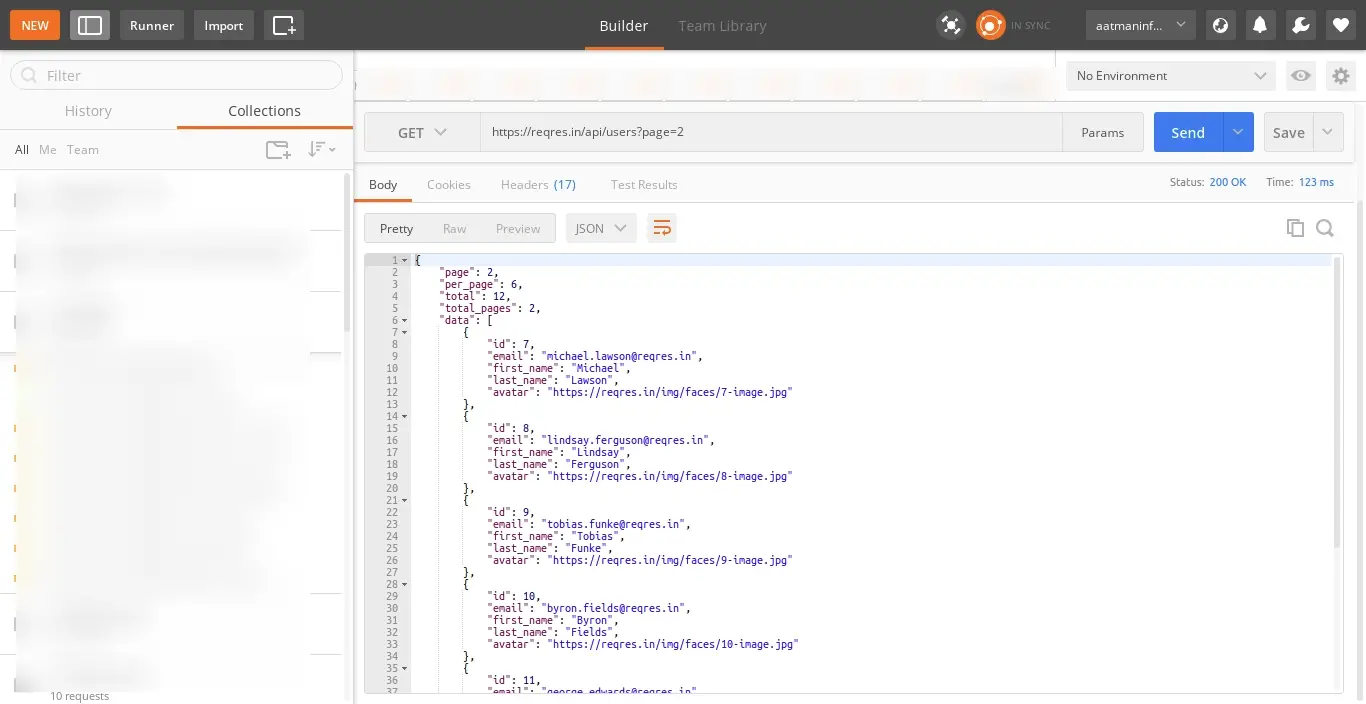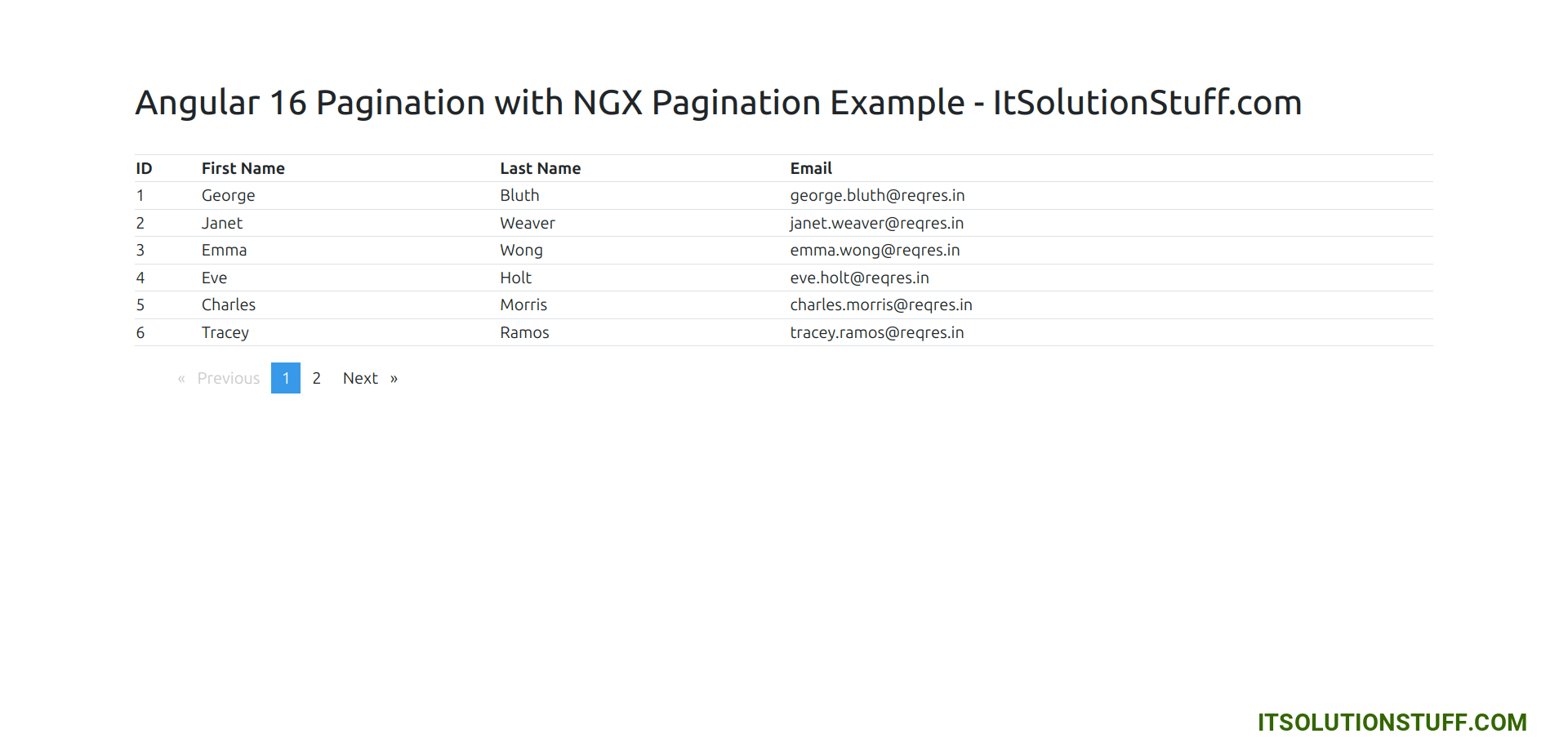Angular 16 Pagination with NGX Pagination Example
Hi Developer,
Now, let's see an article of angular 16 server side pagination example. This tutorial will give you a simple example of angular 16 pagination example. step by step explain angular 16 ngx-pagination example. you can see how to create pagination in angular 16. Follow the below tutorial step of angular 16 implement pagination example.
In this example, we will create simple pagination using the NGX Pagination npm package. we will use the "https://reqres.in/" demo
API to get users with pagination. we will show the id, first name, last name, and email of the users. so, let's see the below steps:
Step 1: Create New App
You can easily create your angular 16 apps using the below command:
ng new my-new-app
Step 2: Install ngx-pagination
In this step, we will install ngx-pagination package. let's install by following command:
npm install ngx-pagination --save
Step 3: Import Modules
In this step, we need to import HttpClientModule and NgxPaginationModule to app.module.ts file. so let's import it as like bellow:
src/app/app.module.ts
import { BrowserModule } from '@angular/platform-browser';
import { NgModule } from '@angular/core';
import { AppComponent } from './app.component';
import { HttpClientModule } from '@angular/common/http';
import { NgxPaginationModule } from 'ngx-pagination';
@NgModule({
declarations: [
AppComponent
],
imports: [
BrowserModule,
HttpClientModule,
NgxPaginationModule
],
providers: [],
bootstrap: [AppComponent]
})
export class AppModule { }
Step 4: Create Service for API
Here, we need to create service for http client request. we will create service file and write client http request code. this service will use in our component file.
you have to use service for getting pagination records. if you want to create your own rest api then you can follow bellow tutorials:
1. How to Create a REST API using Node JS?
2. Laravel REST API using Passport
3. Codeigniter REST API using Passport
Here, i will use "https://reqres.in/" website demo api for getting paginate users. you can see bellow json response we need:
API Response:

So let's create service and put bellow code:
ng g s services/users
Now let's add code as like bellow:
src/app/services/users.service.ts
import { Injectable } from '@angular/core';
import { HttpClient } from '@angular/common/http';
@Injectable({
providedIn: 'root'
})
export class UsersService {
private url = 'https://reqres.in/api/users';
constructor(private httpClient: HttpClient) { }
getUsers(page: number){
return this.httpClient.get(this.url + '?page=' + page);
}
}
Step 5: Use Service to Component
Now we have to use this services to our app component. So let's updated code as like bellow:
src/app/app.component.ts
import { Component, OnInit } from '@angular/core';
import { UsersService } from './services/users.service';
@Component({
selector: 'app-root',
templateUrl: './app.component.html',
styleUrls: ['./app.component.css']
})
export class AppComponent implements OnInit {
users:any;
p: number = 1;
total: number = 0;
constructor(private service:UsersService) {}
/*------------------------------------------
--------------------------------------------
About
--------------------------------------------
--------------------------------------------*/
ngOnInit() {
this.getUsers();
}
/**
* Write code on Method
*
* @return response()
*/
getUsers(){
this.service.getUsers(this.p)
.subscribe((response: any) => {
this.users = response.data;
this.total = response.total;
});
}
/**
* Write code on Method
*
* @return response()
*/
pageChangeEvent(event: number){
this.p = event;
this.getUsers();
}
}
Step 6: Updated View File
Now here, we will updated our html file. let's put bellow code:
src/app/app.component.html
<div class="container">
<h1>Angular Pagination Example - ItSolutionStuff.com</h1>
<table class="table table-bordered">
<tr>
<th>ID</th>
<th>First Name</th>
<th>Last Name</th>
<th>Email</th>
</tr>
<tr *ngFor="let user of users| paginate: { itemsPerPage: 6, currentPage: p, totalItems: total }">
<td>{{ user.id }}</td>
<td>{{ user.first_name }}</td>
<td>{{ user.last_name }}</td>
<td>{{ user.email }}</td>
</tr>
</table>
<pagination-controls (pageChange)="pageChangeEvent($event)"></pagination-controls>
</div>
Run Angular App:
All the required steps have been done, now you have to type the given below command and hit enter to run the Angular app:
ng serve
Now, Go to your web browser, type the given URL and view the app output:
http://localhost:4200
you will see the layout as below:

I hope it can help you...

